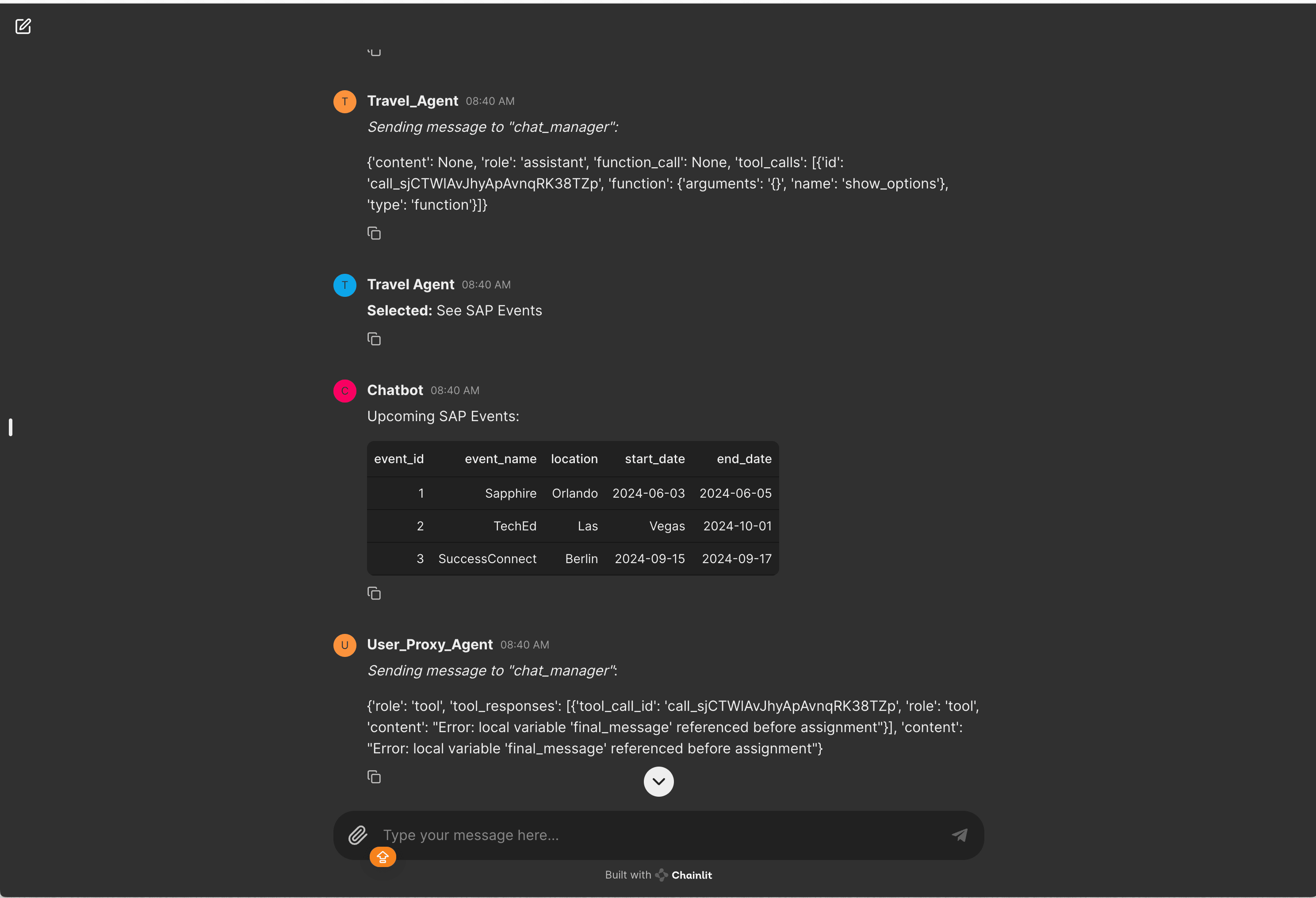Case Study - Empowering Multi-Agent Conversations with a User-Friendly Interface
Developed a powerful and intuitive user interface for Microsofts AutoGen framework, enabling seamless multi-agent interactions and task completion.
- Client
- Open Source
- Year
- Service
- AI Interface Development

Overview
In the rapidly evolving landscape of AI-powered applications, the need for accessible interfaces to harness the power of advanced frameworks became evident. This realization led to the creation of AutoGen-UI, a comprehensive user interface built on top of Microsoft's AutoGen framework, designed to simplify multi-agent conversations and task completion for developers and end-users alike.
AutoGen-UI is open-source! View on GitHub
The AutoGen-UI Advantage
AutoGen-UI stands out as a powerful interface for the AutoGen framework, offering:
-
Intuitive Chat Interface: Seamless integration of Chainlit to provide a user-friendly chat experience for interacting with AutoGen agents.
-
Multi-Agent Conversation Support: Facilitates complex interactions between multiple AI agents to solve tasks collaboratively.
-
Easy Setup and Configuration: Simplified environment setup process with clear instructions for Python, Conda, and Docker integration.
-
Customizable UI Elements: Ability to easily change logos and customize the interface to match specific project needs.
-
Flexible Deployment: Support for both local development and containerized deployment using Docker.
This interface significantly reduces the barrier to entry for leveraging AutoGen's capabilities, allowing developers to focus on building sophisticated AI applications rather than wrestling with complex setups.
Key Components of AutoGen-UI
Chat Interface
The core of AutoGen-UI is its intuitive chat interface, powered by Chainlit, providing a seamless way to interact with AutoGen agents.

Multi-Agent Interaction
AutoGen-UI facilitates complex multi-agent conversations, allowing for sophisticated problem-solving and task completion.

Development Journey
Challenges Overcome
-
Bridging AutoGen and User Interface: Creating a seamless connection between AutoGen's powerful backend capabilities and a user-friendly frontend required careful architecture and integration work.
-
Balancing Simplicity and Flexibility: Designing an interface that's easy to use for beginners while still providing the flexibility needed for advanced users and complex multi-agent scenarios was a significant challenge.
By addressing these hurdles, AutoGen-UI emerged as a versatile and accessible tool, positioning itself as the go-to interface for AutoGen-based application development.
Our Approach
- Frontend Development (Chainlit)
- Backend Integration (AutoGen)
- Docker Containerization
- Python Environment Management
Developing AutoGen-UI was about bridging the gap between powerful AI capabilities and user-friendly interfaces. It's a step towards making advanced AI tools accessible to a broader audience of developers and researchers.

Developer of AutoGen-UI
- Reduction in Setup Time for AutoGen Projects
- 70%
- GitHub Stars
- 100+
- Integrated Technologies
- 5+
- Faster Prototyping of Multi-Agent Systems
- 3x